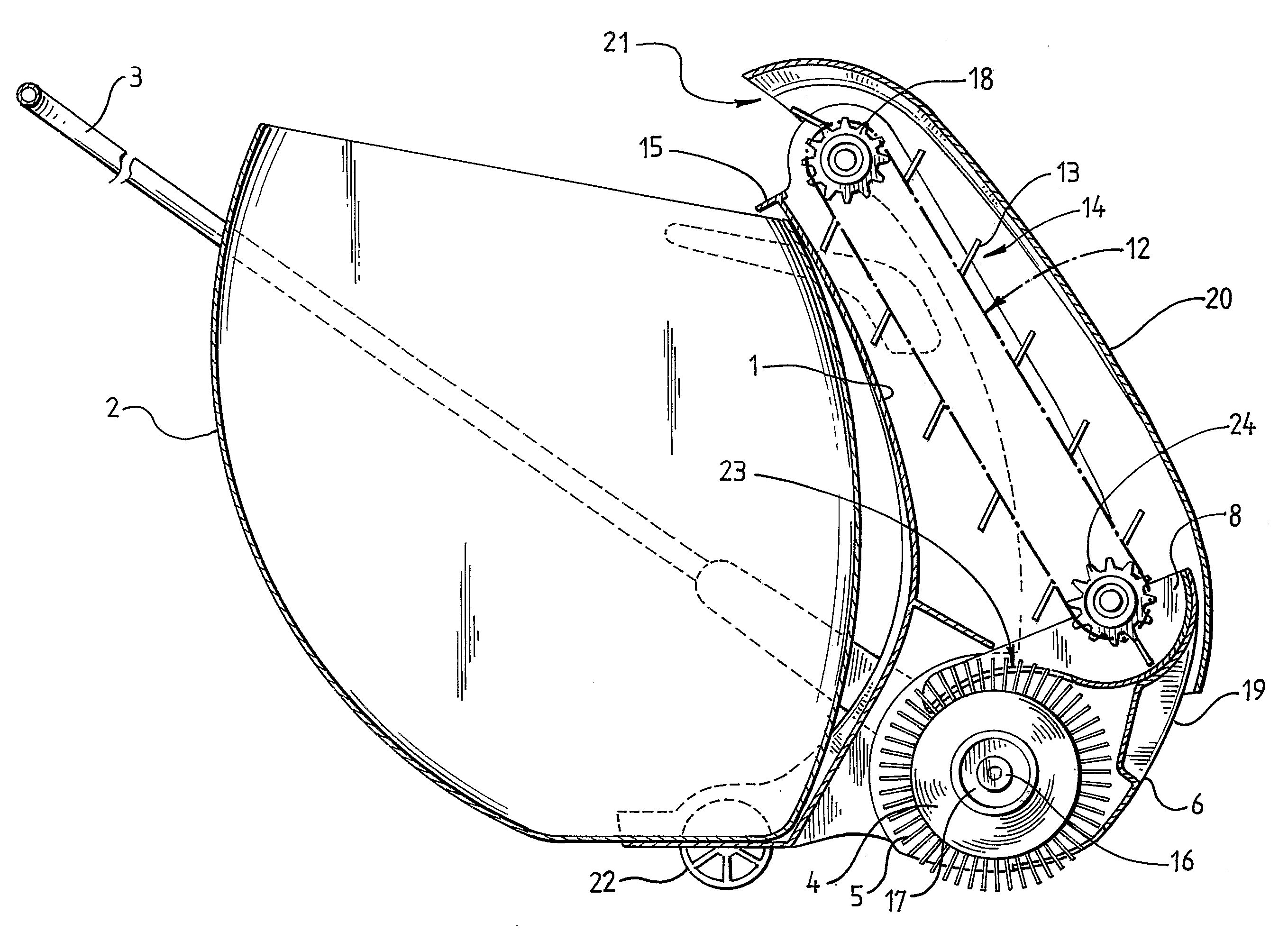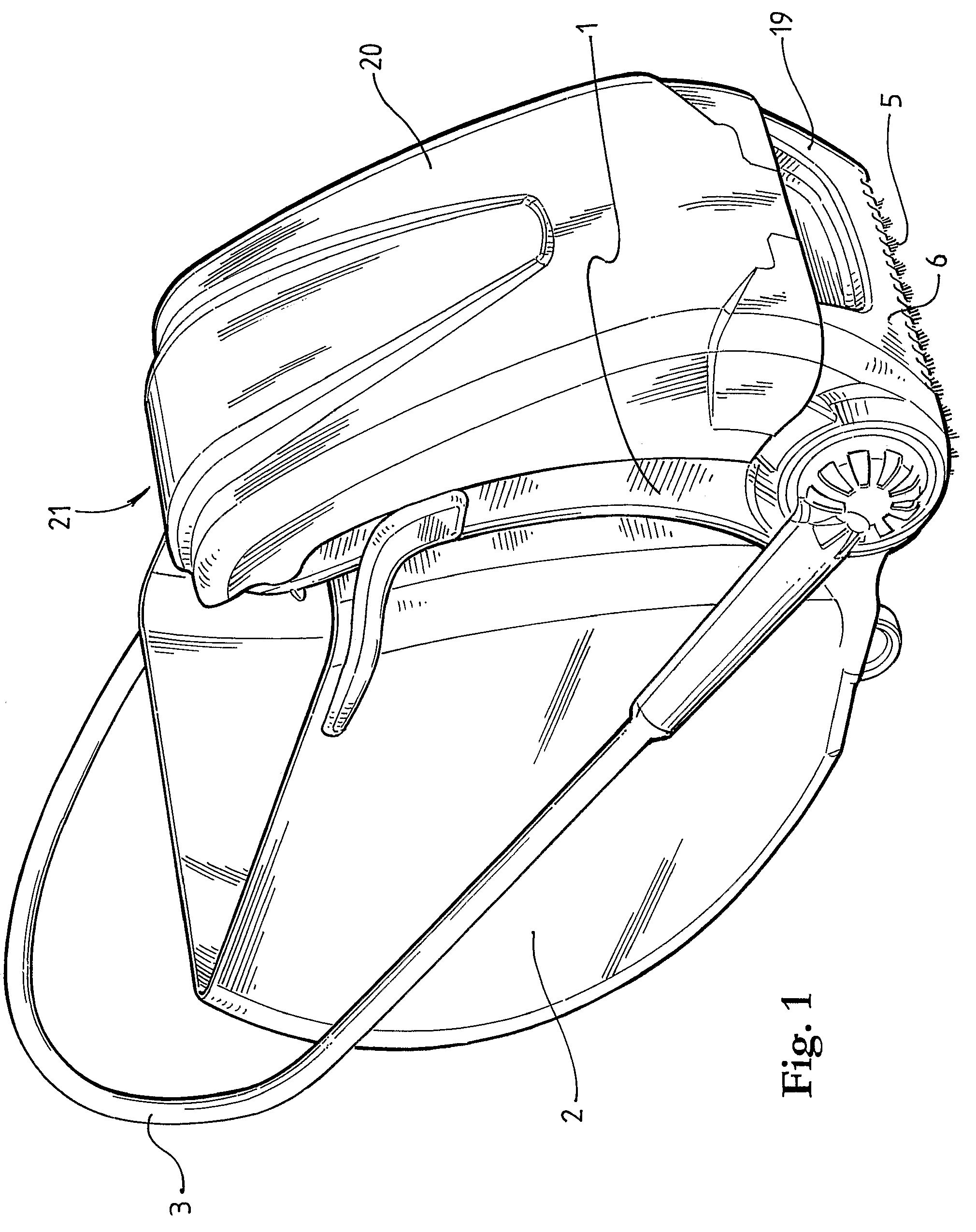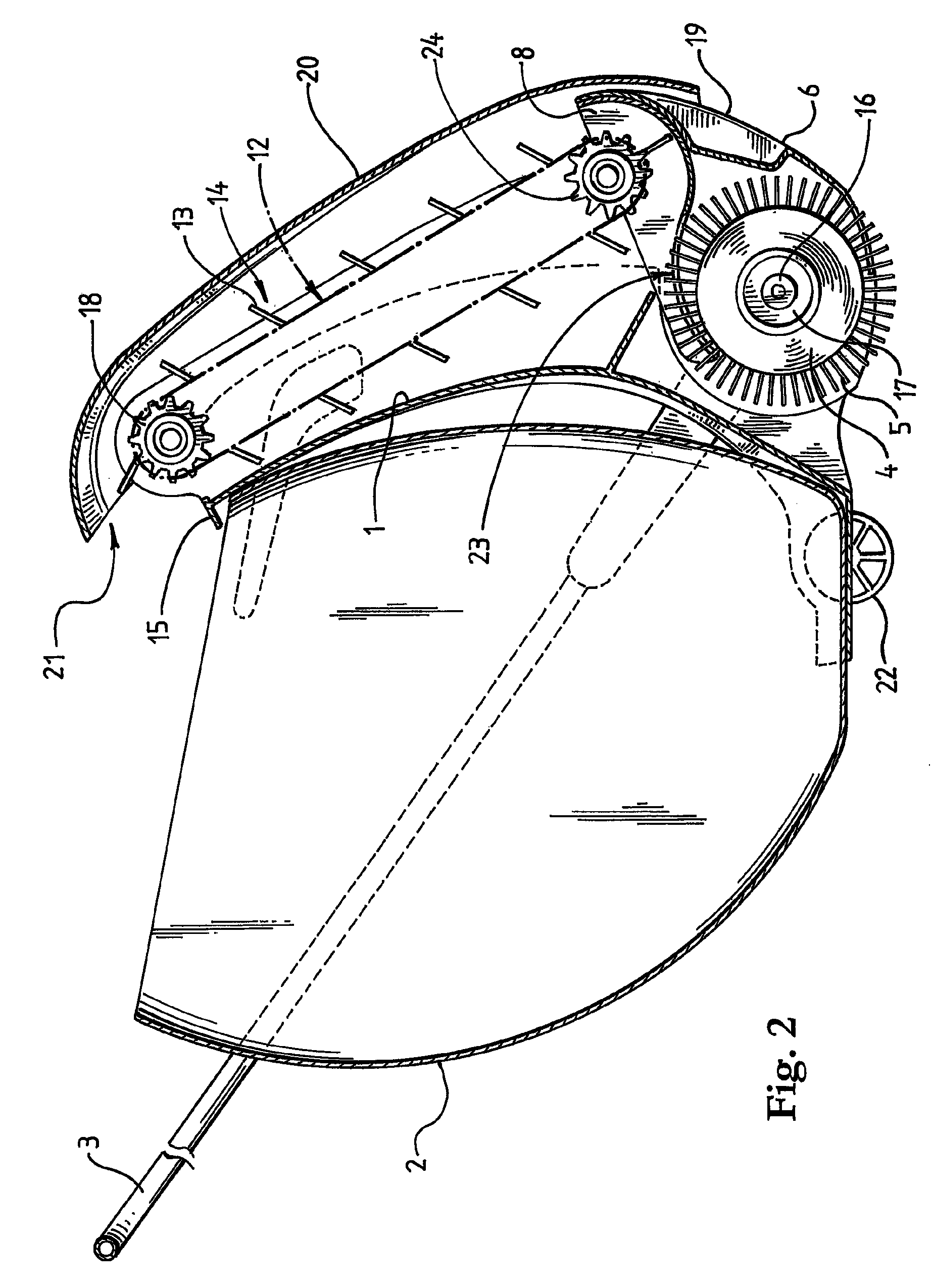Leaf and debris sweeper
a technology of debris sweeper and blade, which is applied in the direction of botany apparatus and processes, horticulture, and harvest/wine cultivation, etc., can solve the problems of corresponding increase in noise and air pollution associated with such powered tools, and difficulty in complete gathering
- Summary
- Abstract
- Description
- Claims
- Application Information
AI Technical Summary
Benefits of technology
Problems solved by technology
Method used
Image
Examples
Embodiment Construction
[0040]Referring firstly to FIG. 1 there is shown an overall view of the debris collecting device of the invention, including a housing 1 and a catcher 2. The housing contains the mechanicals of the device and has a handle 3 for manual operation. This embodiment of the invention is adapted for hand-held manual use and is produced on the scale of similar proportions to hand operated lawn mowers.
[0041]The housing 1 is provided with an opening at its lower edge for projection of the tynes and the opening is particularly configured to provide a clearance port which allows for the specific control of the size of debris picked up by the device. The clearance port prevents large pieces of debris from being transported into the confines of the housing and thereby assist in preventing overly large pieces of debris from clogging up the mechanicals and action of the device. Overly large pieces of debris, for example, big pieces of bark or paper etc, will therefore be removed from the tynes as t...
PUM
 Login to View More
Login to View More Abstract
Description
Claims
Application Information
 Login to View More
Login to View More - R&D
- Intellectual Property
- Life Sciences
- Materials
- Tech Scout
- Unparalleled Data Quality
- Higher Quality Content
- 60% Fewer Hallucinations
Browse by: Latest US Patents, China's latest patents, Technical Efficacy Thesaurus, Application Domain, Technology Topic, Popular Technical Reports.
© 2025 PatSnap. All rights reserved.Legal|Privacy policy|Modern Slavery Act Transparency Statement|Sitemap|About US| Contact US: help@patsnap.com



